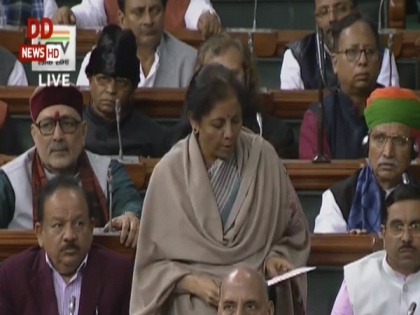Govt outlays infrastructure investments of Rs 102 lakh crore in FY 2020-25
By ANI | Published: January 31, 2020 02:12 PM2020-01-31T14:12:33+5:302020-01-31T14:45:20+5:30
India needs to invest more than 1.4 trillion dollars (Rs 100 lakh) crore in infrastructure to achieve the goal of becoming a five trillion dollar economy by 2024-25, according to the Economic Survey 2019-20 tabled in Parliament on Friday.

Govt outlays infrastructure investments of Rs 102 lakh crore in FY 2020-25
India needs to invest more than 1.4 trillion dollars (Rs 100 lakh) crore in infrastructure to achieve the goal of becoming a five trillion dollar economy by 2024-25, according to the Economic Survey 2019-20 tabled in Parliament on Friday.
The survey emphasised that investment in infrastructure is necessary for growth. Power shortages, inadequate transport and poor connectivity affect overall growth performance. Since the provision of adequate infrastructure is essential for inclusive growth, India recently launched the National Infrastructure Pipeline (NIP) for 2020-2025.
"The NIP is expected to enable well-prepared infrastructure projects that will create jobs, improve ease of living and provide equitable access for infrastructure for all thereby making growth more inclusive," said the survey tabled by Finance Minister Nirmala Sitharaman.
As per the NIP, the Centre and state governments are expected to have an equal share of funding of the projects ((39 per cent each) followed by the private sector (22 per cent). Projects worth Rs 42.7 lakh crore (42 per cent) are under implementation.
Financing of the NIP will be a challenge but the survey hoped that a bouquet of well-prepared project will attract investments from the Centre, state governments, urban local government, banks, financial institutions, private equity funds and private investors.
The survey gave an overview of sectoral developments relating to railways, road transport, civil aviation, shipping, telecom, petroleum and natural gas, power, mining, housing and urban infrastructure.
Total investment in the roads and highways sector has gone up more than three times in five year period of 2014-15 to 2018-19.
Indian Railways carried 120 crore tonnes of freight and 840 crore passengers, making it the world's largest passenger carrier and fourth largest freight carrier.
India has 136 commercially-managed airports by the Airport Authority of India and six under public private partnerships for operation, maintenance and development of airports. To ease the strain on existing airport capacities, 100 more airports are to be made operational by 2023-24.
The survey said about 95 per cent of India's trade by volume and 68 per cent in terms of value is transported by sea. The Ministry of Shipping is striving to improve operational efficiencies through mechsation, digitisation and process simplification.
In telecom, the government is implementing the Bharat Net programme in a phased manner for providing broadband connectivity to all the 2.5 lakh gram panchayats in the country.
Major reforms have been undertaken by the Ministry of Petroleum and Natural Gas in exploration and licensing policy to enhance exploration activities, attract domestic and foreign investment and accelerate domestic production of oil and gas from existing fields. There has been a surge of reserves of crude oil in 2019.
However, there is a need to augment refining capacity to meet the growing demand for petroleum fuels and petrochemicals.
Constant efforts by the government to foster investments in the power sector has resulted in India improving its ranking to 76th position in Energy Transition Index by the World Economic Forum. The installed capacity has increased from 3.56 lakh megawatt in March 2019 to 3.65 lakh megawatt by October 31, 2019.
India produces 95 minerals which include four hydrocarbon energy minerals, five atomic minerals, ten metallic, 21 non-metallic and 55 minor minerals. There has been a notable turnaround in mineral production because of policy reforms and production of major minerals.
The construction sector accounts for 8.24 per cent of GDP which includes housing and employs about 12 per cent of the workforce. The Pradhan Mantri Awaas Yojana Urban (PMAY-U) was launched in June 2015.
The survey said it is one of the largest housing schemes of the world covering entire urban India and is being implemented through four verticals. Besides, since the launch of the Smart City Mission in 100 cities, about 5,151 projects worth more than Rs 2 lakh crore are at various stages of implementation.
A total of 1,290 projects worth Rs 22,569 crore have been completed and are operational.
( With inputs from ANI )
Open in app